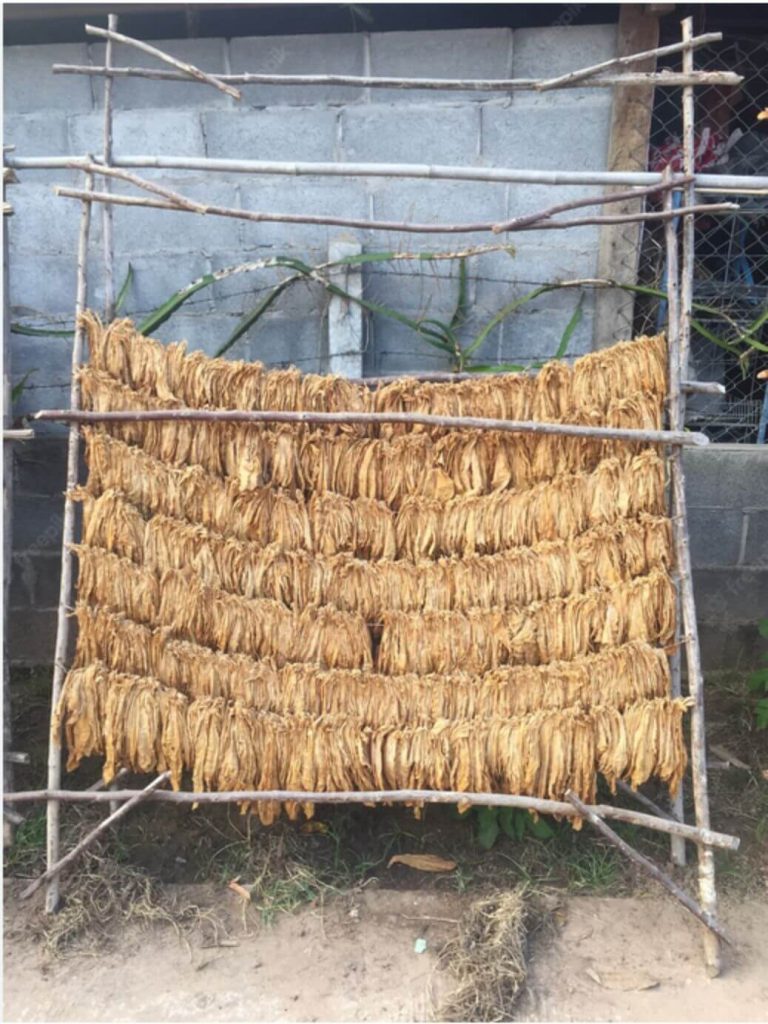
Burley tobacco drying: a ritual steeped in tradition, a process refined by modern science, and an art form passed down through generations. Each step, from harvesting to drying, is filled with intrigue and precision, designed to preserve the unique properties that make this tobacco so sought after.
Tobacco, particularly Burley tobacco, has a rich and storied history. It’s a plant that has stood the test of time, from the hands of ancient civilizations to the production lines of today. Among the many processes that it goes through, one stands out for its remarkable impact on the product’s final quality: drying.
The Significance of Drying in Tobacco Production
Drying, or curing as it’s often called, is a crucial step in tobacco production. It is during this stage that the tobacco develops its distinctive color and flavor that we are so familiar with.
The Origin of Burley Tobacco
Burley tobacco, known for its light, airy texture and significantly lower sugar content compared to other tobacco types, originated in the U.S. during the 19th century. Its unique characteristics are derived from its drying process, which sets it apart from its counterparts.
Understanding the Drying Process
The drying process is not just about removing moisture from the tobacco leaves. It’s about allowing the natural enzymes and chemical processes within the leaf to transform its sugars and other compounds. This transformation is what gives the tobacco its distinctive taste and aroma.
The Harvesting of Burley Tobacco
Harvesting is the first step in the drying process, and it sets the tone for the quality of the final product.
The Perfect Harvesting Time
Harvesting is typically done when the leaves have reached the right stage of maturity. This is usually when the leaves are a rich, dark green and have a plump, robust texture.
Preparing Tobacco for Drying
Once harvested, the tobacco leaves are prepared for drying. The preparation often involves the removal of the midrib, or stem, of the leaf. This is done because the stem contains a significant amount of moisture and could impact the drying process.
The Art of Drying Burley Tobacco
Now we move onto the heart of the matter: drying Burley tobacco. The process is a delicate one, requiring careful control over various factors such as temperature, humidity, and airflow.
Methods of Drying Burley Tobacco
There are a few different methods used to dry Burley tobacco, each with its unique impacts on the tobacco’s flavor, aroma, and texture.
Air-Curing: The Traditional Way
Air-curing is the traditional method of drying Burley tobacco. It involves hanging the tobacco in well-ventilated barns and allowing it to dry naturally over a period of several weeks.
Fire-Curing: The Innovative Approach
An alternative to air-curing is fire-curing. This method involves using heat from a controlled fire to speed up the drying process, typically resulting in a tobacco with a stronger, more robust flavor.
Challenges in the Drying Process
While the drying process is vital to producing high-quality Burley tobacco, it’s not without its challenges. These can range from maintaining the ideal conditions for drying to preventing the growth of mold and other fungi.
The Impact of Drying on Burley Tobacco
Drying doesn’t just rid the tobacco leaves of moisture; it fundamentally changes their characteristics in profound and exciting ways.
Physical Changes in Tobacco Leaves During Drying
During drying, the leaves lose their vibrant green color and take on a brown, almost golden hue. They also become much more brittle and delicate.
Chemical Transformations from Drying
On a chemical level, drying initiates a series of reactions that produce the many compounds responsible for tobacco’s flavor and aroma. It is this complex interplay of chemistry that creates the diverse array of tobacco products we have today.
Conclusion: The Magic Behind Burley Tobacco Drying
In conclusion, the process of drying Burley tobacco is a fascinating blend of art, science, tradition, and innovation. The complexities involved in turning a green leaf into a product enjoyed by millions around the world are a testament to the skill and dedication of those who work in this remarkable industry.
FAQs:
-
What is Burley tobacco drying?
- It’s a process that removes moisture from the tobacco leaves, allowing natural chemical processes within the leaf to transform sugars and other compounds, resulting in its distinctive taste and aroma.
-
Why is drying so critical in the production of Burley tobacco?
- Drying allows the natural enzymes and chemical processes within the leaf to transform its sugars and other compounds, which gives the tobacco its distinctive taste and aroma.
-
How does the drying process of Burley tobacco work?
- The leaves are usually air-cured, hung in well-ventilated barns, and allowed to dry over several weeks.
-
Can Burley tobacco be dried using other methods besides air-curing?
- Yes, fire-curing is another method, which involves using heat from a controlled fire to speed up the drying process, resulting in a stronger, more robust flavor.
-
Where is Burley tobacco predominantly grown and dried?
- The United States, particularly Kentucky and Tennessee, are the largest producers of Burley tobacco.
Books:
- “Tobacco: Production, Chemistry, and Technology” by D. Layten Davis and Mark T. Nielsen.
- “Burley Tobacco: A Handbook of Information” by Oscar Edward Norman and Robert Beverly Heath.
- “Crop Production: Evolution, History, and Technology” by C. Wayne Smith.